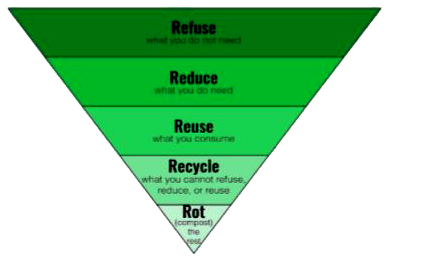Apparatus: Two plastic bottles, measuring cylinder, thermometer, etc
Chemicals: Potassium nitrate, sodium hydroxide, water, etc.
(Sodium hydroxide being corrosive, handle it carefully in presence of teacher.)
Procedure: Take I 00 mL water in each of the two plastic bottles. Plastic being insulator of heat, the dissipation of heat can be prevented. Note the temperature of water in the bottles. Put 5 g potassium nitrate (KNO3) in the bottle and shake well. Note the temperature of the solution formed. Put 5 g sodium hydroxide (NaOH) in the other bottle. Shake the bottle well. Note the temperature.
In the first bottle, the process of dissolution of potassium nitrate took place while in the second bottle, the process of dissolution of sodium hydroxide took place
As per your observation which one is exothermic process and which is an endothermic process?
Text Solution
The process of dissolution of KNO3 in water is endothermic while the process of dissolution of NaOH in water is exothermic process.
|
Topper's Solved these Questions
- CHEMICAL REACTIONS AND EQUATIONSBOOK - TARGET PUBLICATIONCHAPTER - CHEMICAL REACTIONS AND EQUATIONSEXERCISE - Chapter Assessment
11 Videos
- CHEMICAL REACTIONS AND EQUATIONSBOOK - TARGET PUBLICATIONCHAPTER - CHEMICAL REACTIONS AND EQUATIONSEXERCISE - Give balanced chemical equation
26 Videos
- CHEMICAL REACTIONS AND EQUATIONSBOOK - TARGET PUBLICATIONCHAPTER - CHEMICAL REACTIONS AND EQUATIONSEXERCISE - Questions based on paragraph
20 Videos
- CARBON COMPOUNDSBOOK - TARGET PUBLICATIONCHAPTER - CARBON COMPOUNDSEXERCISE - Chapter Assessment(Give scientific reasons.)
4 Videos
- METALLURGYBOOK - TARGET PUBLICATIONCHAPTER - METALLURGYEXERCISE - CHAPTER ASSESSMENT
19 Videos
Similar Questions
Knowledge Check
Plastic bottles are formed from the chemical substance
APlymer Tetrachloro PolyesterBPolyethylene Terephthalater PolyesterCPolyamino Tetrameric PolyethyleneDPolymer Tryptophan PolyesterPickles are stored in plastic bottles mainly because they are:
Anon-biodegradableBgood insulatorsCdurableDnon-reactiveA student takes 1 g of sodium hydroxide. He adds it to 50 mL of water taken in a plastic bottle and shakes the content well. Which of the following observation is correct?
ASodium does not dissolve in water.BA white precipitate is formedCThe temperature of the reaction solution increasesDThe resulting solution is acidic

When recycling a plastic water bottle, what should you do with the cap?
View SolutionBacterial species which can decompose PET or plastic bottles.
View SolutionA bottle of water is 37 th full. This water is poured into another bottle which is now 23 rd full. Find the ratio of the volume of the first bottle to the volume of the second bottle.
View SolutionA student takes 1 g of sodium hydroxide. He adds it to 50 mL of water taken in a plastic bottle and shakes the content well. Which of the following observation is correct?
View SolutionA plastic bottle of 500 g has a volume of 450cm3 . Density of water is 1g cm−3 ?
Mass of the water displaced by the bottle ?
View Solution
